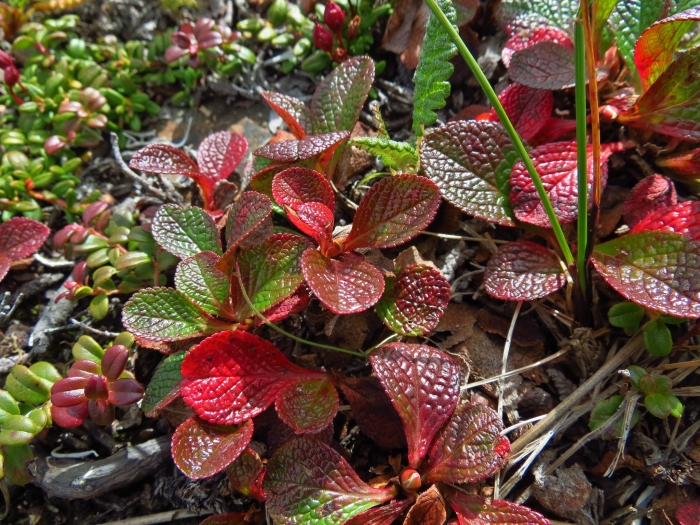Red Fruit Bearberry
(Arctostaphylos rubra)
Red Fruit Bearberry (Arctostaphylos rubra)
/
/

Annika Lindqvist
CC BY 4.0
Image By:
Annika Lindqvist
Recorded By:
Copyright:
CC BY 4.0
Copyright Notice:
Photo by: Annika Lindqvist | License Type: CC BY 4.0 | License URL: http://creativecommons.org/licenses/by/4.0/ | Rights Holder: Annika Lindqvist | Publisher: iNaturalist | Date Created: 2014-08-10T13:45:32-07:00 |

























Estimated Native Range
Summary
Arctostaphylos rubra, commonly known as Red Fruit Bearberry or Red Manzanita, is a low-growing, spreading evergreen shrub native to the circumpolar regions of the Northern Hemisphere, including parts of Eurasia, Alaska, and Greenland. It is typically found in subalpine forests, tundra, and other cold, mountainous areas. This plant is well-adapted to harsh conditions and often occupies nutrient-poor, well-drained soils. It reaches up to 6 inches in height and can spread widely. The leaves are small, leathery, and marcescent, meaning they wither but do not fall off immediately. In spring and early summer, it produces racemes of small, bell-shaped flowers that are hairy and glandular, followed by bright red drupe fruits that are edible but not particularly palatable.
Red Fruit Bearberry is valued for its ability to stabilize soil and for its hardiness in cold climates. It is often used in rock gardens, as ground cover, and in restoration projects where erosion control is needed. The plant requires minimal maintenance, thriving in full sun to partial shade and preferring moist conditions, though it is tolerant of dry spells once established. While not commonly used for its fruit, it does provide a food source for wildlife, including birds and bears. Cultivation should consider its spreading habit, which can be expansive, and its preference for acidic soils.CC BY-SA 4.0
Red Fruit Bearberry is valued for its ability to stabilize soil and for its hardiness in cold climates. It is often used in rock gardens, as ground cover, and in restoration projects where erosion control is needed. The plant requires minimal maintenance, thriving in full sun to partial shade and preferring moist conditions, though it is tolerant of dry spells once established. While not commonly used for its fruit, it does provide a food source for wildlife, including birds and bears. Cultivation should consider its spreading habit, which can be expansive, and its preference for acidic soils.CC BY-SA 4.0
Plant Description
- Plant Type: Shrub
- Height: 0.5-0.5 feet
- Width: 3-6 feet
- Growth Rate: Moderate
- Flower Color: N/A
- Flowering Season: Spring, Summer
- Leaf Retention: Evergreen
Growth Requirements
- Sun: Full Sun, Part Shade
- Water: Low
- Drainage: Medium, Fast
Common Uses
Drought Tolerant, Erosion Control, Groundcover, Low Maintenance
Natural Habitat
Native to subalpine forests, tundra, and cold, mountainous areas of the circumpolar Northern Hemisphere
Other Names
Common Names: Red Manzanita, Red-Barked Manzanita
Scientific Names: , Arctostaphylos rubra, Arctostaphylos alpina subsp. rubra, Arctostaphylos alpina var. rubra, Arctostaphylos alpinus subsp. ruber, Arctostaphylos ruber, Arctous alpina subsp. erythrocarpa, Arctous alpina subsp. rubra, Arctous alpina var. ruber, Arctous alpina var. rubra
GBIF Accepted Name: